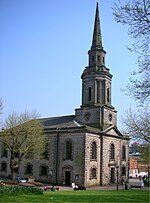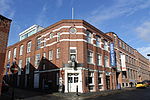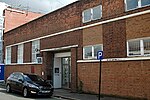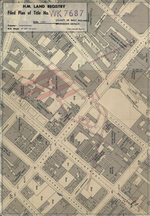St Paul's Square

St Paul's Square is a Georgian square in the Jewellery Quarter, Birmingham, England, named after the church in its centre. It is the last remaining Georgian Square in the city. Built 1777–1779 on the Newhall estate of the Colmore family, it was an elegant and desirable location in the mid-nineteenth century. At the end of the nineteenth century the square was swallowed by workshops and factories, with the fronts of some buildings being pulled down to make shop fronts or factory entrances. Much restoration was done in the 1970s and many of the buildings are Grade II listed. As well as bars, cafés and restaurants, which line the square's four sides, a number of apartment schemes have been built in the area, including a restoration of the façade of the Thomas Walker building, a former buckle maker, which fronts onto the square. St Paul's Club is situated in St Paul's Square. Formed in 1859, it is the Midlands' oldest private members club. The Royal Birmingham Society of Artists has its offices and gallery in premises just off the square. St Paul's Square is served by St Paul's tram stop.
Excerpt from the Wikipedia article St Paul's Square (License: CC BY-SA 3.0, Authors, Images).St Paul's Square
Ludgate Hill, Birmingham Jewellery Quarter
Geographical coordinates (GPS) Address Nearby Places Show on map
Geographical coordinates (GPS)
| Latitude | Longitude |
|---|---|
| N 52.4852 ° | E -1.9058 ° |
Address
Ludgate Hill
B3 1DX Birmingham, Jewellery Quarter
England, United Kingdom
Open on Google Maps










